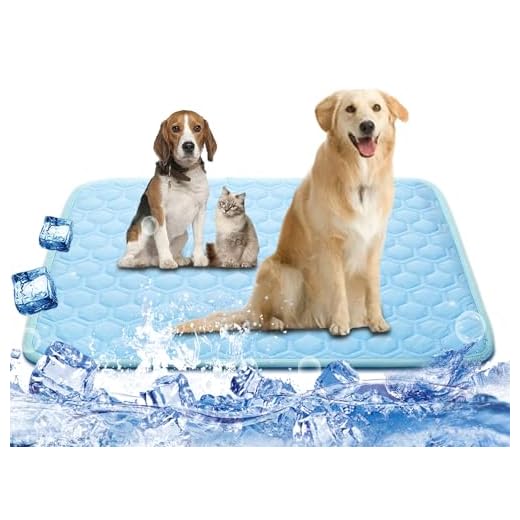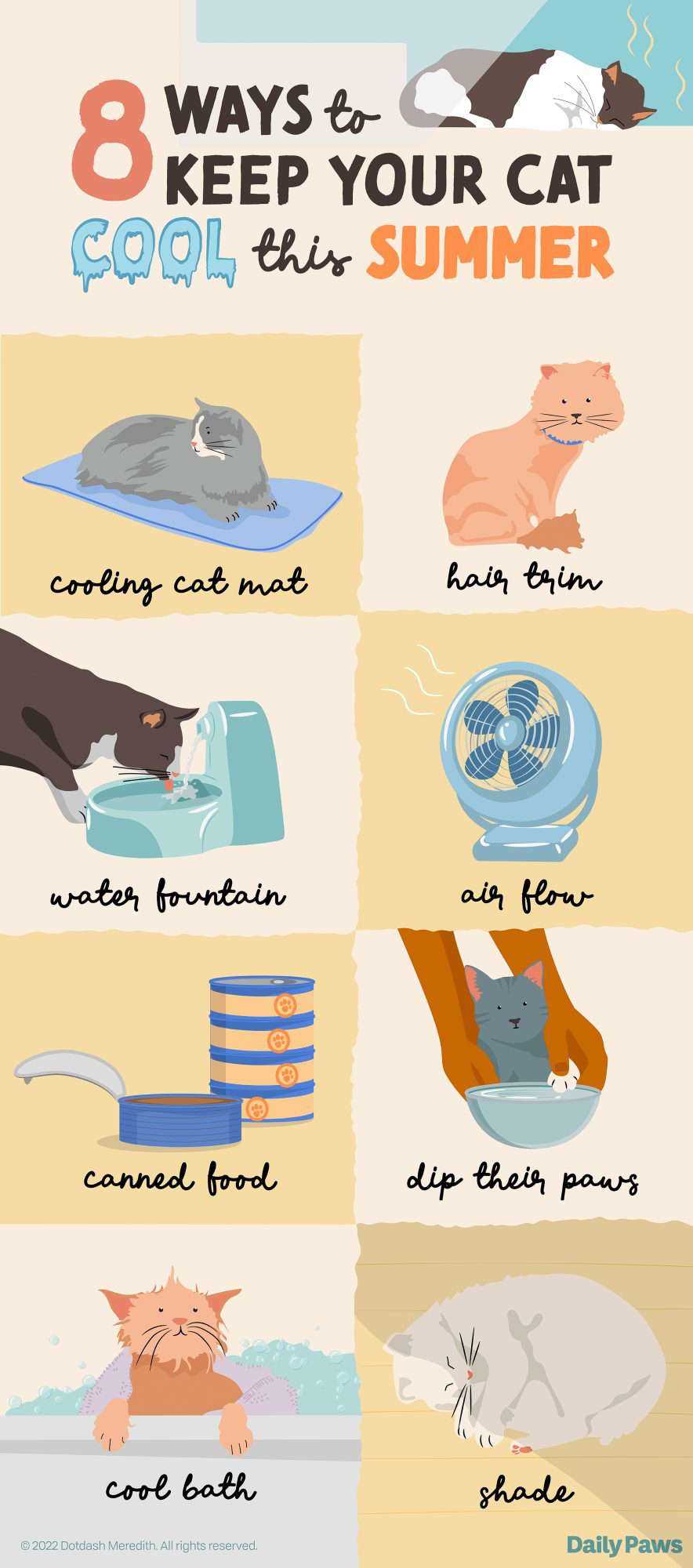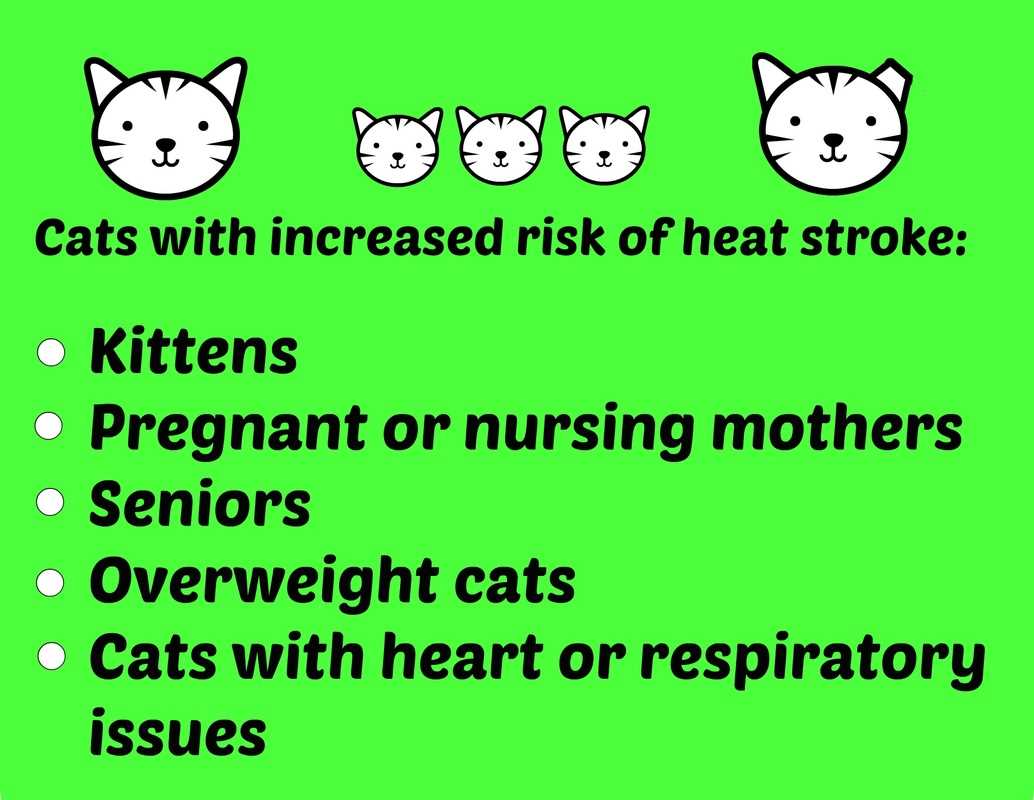

Providing shaded areas is a must. Create spots under trees, porches, or with tarps where they can escape direct sunlight. This simple step can significantly lower their body temperature and prevent overheating.
Access to fresh water is crucial. Set up multiple bowls filled with clean water around the area. Consider adding ice cubes to the water during the hottest part of the day. Cold water encourages hydration and helps them stay refreshed.
Think about using cooling mats or damp towels. These can be placed in shaded areas, allowing your whiskered companions to lay on them and enjoy a pleasant respite from the sweltering environment.
Feeding during cooler times of the day can also help. Offer meals early in the morning or late in the evening when temperatures drop. This reduces the heat generated from food and encourages them to eat more comfortably.
Lastly, monitor their behavior closely. Watch for signs of distress, such as excessive panting or lethargy. Quick action can make a world of difference in their comfort and well-being.
Providing Shade and Shelter for Feral Cats

Building simple shelters is a great way to offer refuge. Use materials like wood or sturdy plastic to create a box that is elevated off the ground, ensuring it stays dry and comfortable. Ventilation is key; make sure there are openings that allow air to flow but are not too large to let in unwanted elements.
Strategically placing tarps or large umbrellas can provide instant shade. Position them in areas where these creatures frequent, ensuring they are secure and won’t blow away. Natural shade from trees is also beneficial; encourage the growth of local flora to enhance the environment.
Consider using reflective materials to redirect sunlight. Placing mirrors or shiny surfaces in the vicinity can create cooler zones by reflecting heat away from resting areas. Additionally, creating a shaded path using plants can guide these animals to cooler spots.
For more tips on integrating other pets, check out this link: how to get your cat to like your dog.
Ensuring Access to Fresh Water and Cooling Resources

Provide a constant supply of clean water in multiple locations. Use shallow bowls or pet fountains to encourage hydration. Refill these containers daily, especially during hotter periods. Consider adding ice cubes to the water during peak temperatures; this can offer a refreshing surprise and increase interest in drinking.
Utilizing Wet Food and Ice Treats
Incorporate wet food into the diet, as it contains higher moisture content, helping with hydration. You can also freeze small portions of broth or tuna juice in ice cube trays. These treats can be a delightful way to keep them refreshed while providing extra hydration.
Creating Cooling Spots
Designate specific areas with cooling mats or wet towels. These resources can help regulate body temperature. Ensure these spots are easily accessible and refreshed periodically. Consider placing these in shaded areas to maximize their effectiveness.
For more information on what they can eat, check this link: can cats eat black eyed peas.
Providing shaded areas is a must. Create spots under trees, porches, or with tarps where they can escape direct sunlight. This simple step can significantly lower their body temperature and prevent overheating.
Access to fresh water is crucial. Set up multiple bowls filled with clean water around the area. Consider adding ice cubes to the water during the hottest part of the day. Cold water encourages hydration and helps them stay refreshed.
Think about using cooling mats or damp towels. These can be placed in shaded areas, allowing your whiskered companions to lay on them and enjoy a pleasant respite from the sweltering environment.
Feeding during cooler times of the day can also help. Offer meals early in the morning or late in the evening when temperatures drop. This reduces the heat generated from food and encourages them to eat more comfortably.
Lastly, monitor their behavior closely. Watch for signs of distress, such as excessive panting or lethargy. Quick action can make a world of difference in their comfort and well-being.
Providing Shade and Shelter for Feral Cats

Building simple shelters is a great way to offer refuge. Use materials like wood or sturdy plastic to create a box that is elevated off the ground, ensuring it stays dry and comfortable. Ventilation is key; make sure there are openings that allow air to flow but are not too large to let in unwanted elements.
Strategically placing tarps or large umbrellas can provide instant shade. Position them in areas where these creatures frequent, ensuring they are secure and won’t blow away. Natural shade from trees is also beneficial; encourage the growth of local flora to enhance the environment.
Consider using reflective materials to redirect sunlight. Placing mirrors or shiny surfaces in the vicinity can create cooler zones by reflecting heat away from resting areas. Additionally, creating a shaded path using plants can guide these animals to cooler spots.
For more tips on integrating other pets, check out this link: how to get your cat to like your dog.
Ensuring Access to Fresh Water and Cooling Resources

Provide a constant supply of clean water in multiple locations. Use shallow bowls or pet fountains to encourage hydration. Refill these containers daily, especially during hotter periods. Consider adding ice cubes to the water during peak temperatures; this can offer a refreshing surprise and increase interest in drinking.
Utilizing Wet Food and Ice Treats
Incorporate wet food into the diet, as it contains higher moisture content, helping with hydration. You can also freeze small portions of broth or tuna juice in ice cube trays. These treats can be a delightful way to keep them refreshed while providing extra hydration.
Creating Cooling Spots
Designate specific areas with cooling mats or wet towels. These resources can help regulate body temperature. Ensure these spots are easily accessible and refreshed periodically. Consider placing these in shaded areas to maximize their effectiveness.
For more information on what they can eat, check this link: can cats eat black eyed peas.
Providing shaded areas is a must. Create spots under trees, porches, or with tarps where they can escape direct sunlight. This simple step can significantly lower their body temperature and prevent overheating.
Access to fresh water is crucial. Set up multiple bowls filled with clean water around the area. Consider adding ice cubes to the water during the hottest part of the day. Cold water encourages hydration and helps them stay refreshed.
Think about using cooling mats or damp towels. These can be placed in shaded areas, allowing your whiskered companions to lay on them and enjoy a pleasant respite from the sweltering environment.
Feeding during cooler times of the day can also help. Offer meals early in the morning or late in the evening when temperatures drop. This reduces the heat generated from food and encourages them to eat more comfortably.
Lastly, monitor their behavior closely. Watch for signs of distress, such as excessive panting or lethargy. Quick action can make a world of difference in their comfort and well-being.
Providing Shade and Shelter for Feral Cats

Building simple shelters is a great way to offer refuge. Use materials like wood or sturdy plastic to create a box that is elevated off the ground, ensuring it stays dry and comfortable. Ventilation is key; make sure there are openings that allow air to flow but are not too large to let in unwanted elements.
Strategically placing tarps or large umbrellas can provide instant shade. Position them in areas where these creatures frequent, ensuring they are secure and won’t blow away. Natural shade from trees is also beneficial; encourage the growth of local flora to enhance the environment.
Consider using reflective materials to redirect sunlight. Placing mirrors or shiny surfaces in the vicinity can create cooler zones by reflecting heat away from resting areas. Additionally, creating a shaded path using plants can guide these animals to cooler spots.
For more tips on integrating other pets, check out this link: how to get your cat to like your dog.
Ensuring Access to Fresh Water and Cooling Resources

Provide a constant supply of clean water in multiple locations. Use shallow bowls or pet fountains to encourage hydration. Refill these containers daily, especially during hotter periods. Consider adding ice cubes to the water during peak temperatures; this can offer a refreshing surprise and increase interest in drinking.
Utilizing Wet Food and Ice Treats
Incorporate wet food into the diet, as it contains higher moisture content, helping with hydration. You can also freeze small portions of broth or tuna juice in ice cube trays. These treats can be a delightful way to keep them refreshed while providing extra hydration.
Creating Cooling Spots
Designate specific areas with cooling mats or wet towels. These resources can help regulate body temperature. Ensure these spots are easily accessible and refreshed periodically. Consider placing these in shaded areas to maximize their effectiveness.
For more information on what they can eat, check this link: can cats eat black eyed peas.









